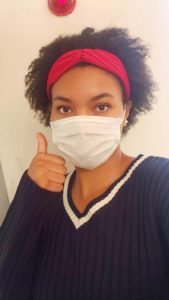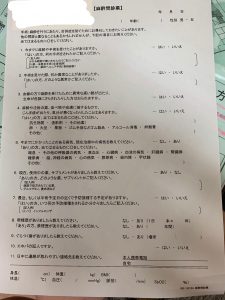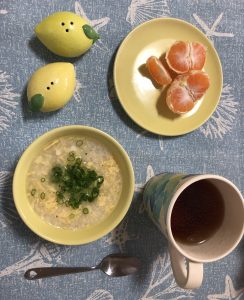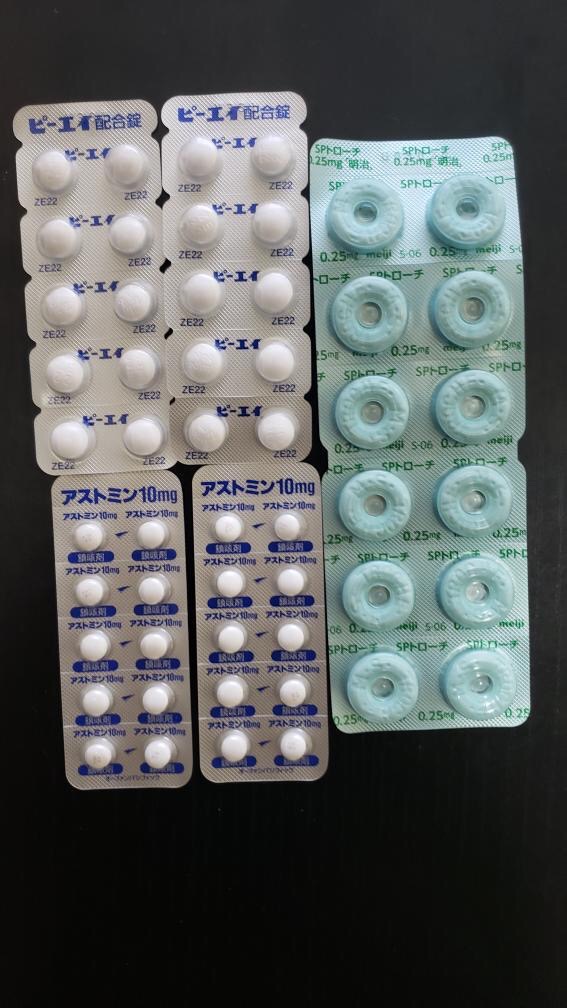This article originally featured in the December 2019 issue of Connect.
It’s your fall body, but you have the flu now!
Article Overview
How to call out of work.
How to get through the hospital and pharmacy
How to recover at home in Japanese style.
 Calling Out Of Work
Calling Out Of Work
Wake up feeling like death is coming for you? It’s that time of year. You should call your school and tell them that you won’t be coming in. Sometimes you can get by with messaging a coworker instead, but you really should call the school directly.
Good morning. It’s OOO.
おはようございます。 OOO です。
Ohayo gozaimasu. OOO desu.
I’ll go to the hospital.
病院に行くつもりです。
びょういん に いく つもり です。
Byouin ni iku tsumori desu.
Japanese Grammar Note
tsumori expresses intention. Affix it to a simple verb, and that changes the meaning to something like “I will do”, “I intend to do”
I’m using regular leave. I’m using sick leave.
年休をとります。 病休をとります。
ねんきゅうをとります。 びょうきゅうをとります。
Nenkyuu o torimasu Byoukyuu o torimasu
(how much leave)
one day 2 hours half a day
一日 二時間 半日
いちにち にじかん はんにち
Ichinichi Nijikan han nichi
Note: sick leave can’t be used in hour increments. You have to use the whole day. So, if you’re just hoping to go to the doctor and then head to work, it has to be regular leave.
Your coworkers want to make sure that you’re okay, so they’ll probably ask what’s wrong. Here’s some common reasons to call out of work!
I have a fever.
熱があります。
ねつ が あります。
Netsu ga arimasu
I don’t really feel well.
調子がちょっと悪いです。
ちょうし が ちょっと わるい です。
Choushi ga chotto warui desu.
My head hurts.
頭が痛いです。
あたま が いたい です。
Atama ga itai desu.
When I think about going to work, I feel despair. I intend to escape to Mexico. Only Mexican food can heal me.
仕事に行くことを考えったら、絶望を感じています。多分、メキシコへ逃げるつもりです。
しごと に いく の かんがえったら、 ぜつぼう を かんじて います。 めきしこ へ にげる つもり です。メキシコ料理だけしかが私を直します。
Shigoto ni iku koto o kangaettara, zetsubou wo kanjite imasu. Mekishiko e nigeru tsumori desu. Mekishiko ryouri dake shika ga watashi wo naoshimasu.
I caught a cold.
風邪をひきました。
かぜ を ひきました。
Kaze o hikimashita.
They’ll probably end the call by asking you to take care- the literal meaning is “It (your health) is important!”
お大事に!
おだいじに!
O daiji ni!
At the hospital
Hospitals are usually open in two parts: a morning reception and an afternoon reception. They’re not all open every day, and it’s common for a hospital to, say, have no afternoon hours on Thursdays. Their schedule is usually indicated with a chart of days and those two time frames, with circles marking times that reception is open.
They’ll probably ask you for your insurance card (保険証、ほけんしょう、hokenshou) and for you to fill out an intake form. Once you’ve done that, you’ll sit down and wait for your name to be called.
 If it’s your first time at that hospital, you might need to fill out an intake form. You can expect that it will ask for your name, address, age, and if you are male or female. If you have any allergies, keep an eye out for the katakana arerugi-. It will probably ask if you have any diseases, take any medicine, and if you have been hospitalized. Here are some additional, very thorough questions that you might see out in the wild. This was taken from a pre-surgery intake form.
If it’s your first time at that hospital, you might need to fill out an intake form. You can expect that it will ask for your name, address, age, and if you are male or female. If you have any allergies, keep an eye out for the katakana arerugi-. It will probably ask if you have any diseases, take any medicine, and if you have been hospitalized. Here are some additional, very thorough questions that you might see out in the wild. This was taken from a pre-surgery intake form.
- Until now, have you ever had surgery or been anesthetized before? If yes, what kind of surgery have you had? (example, formatted with age when had surgery, what type, and what year)
- When you had surgery, did you experience any unusual symptoms?
- Have any of your blood relatives experienced a high fever or critical condition as a result of anesthesia?
- Have you had a rash or been nauseous as a result of an anesthesia, injection, food, or skin contact with an allergen? If yes, what was it? If you know the medicine’s name, please write it below. (antibiotic, X-ray imaging fluid, egg, beans, fruit, latex, rubbing alcohol, bandages, other).
- Have you had or are you treating any of these conditions? (asthma, other respiratory organ illnesses, high blood pressure, heart conditions, blood diseases, liver disease, kidney disease, sugar diabetes, brain or nervous system disease, mental illness, collagen disease, glaucoma, thyroid gland disease)
- Are you using medicines or supplements? If yes, please specify the type, including whether it is over the counter or prescription. (example: prescription type. Name of supplement.)
- Do you have a plan to get any immunizations before your surgery date? If yes, what type and when?
- Do you smoke? If yes, how many per day, and how many years have you been smoking? If you have stopped, how long has it been since you quit smoking?
- If you have experienced chattering teeth, please specify. (no, yes, where in your mouth?)
- Are you a member of Jehovah’s Witnesses?
- Contact information (cellphone number, home phone)
Note: the second number is asked under the assumption that the hospital will be able to contact a family member at your home. You might choose to write an emergency contact’s number here instead of your home phone, if no one will be at your home.)
 Recuperating in (Japanese) Style
Recuperating in (Japanese) Style
Japanese comfort food for battling winter sickness comes in two main categories- udon noodles, and okayu (rice porridge.) Here is a simple recipe for authentic Japanese rice porridge, obtained from an authentic Japanese mom. It’s easy enough to make by yourself when ill, as long as you’re not teetering on the edge of death.
(serves 1 person)
100 grams of cooked rice
200 ml of water
1tsp dashi (白だし, specifically)
Salt, to taste
1 egg
Toppings (traditional!)
20g shirasu, a.k.a. teeny little baby sardines
A pinch of green onion
Turn the stovetop to medium heat, and insert the water and rice. Use a spoon to break up the rice in the water. Heat it until the rice has expanded and softened.
Turn the heat down to low. Now, add the salt and dashi. Stir that and then leave it for 5-10 minutes.
Turn off the heat. Pour in the cracked egg and gently stir it in.
Transfer the porridge to a large bowl. Sprinkle on your toppings.
The Mom that we consulted also says that there are many varieties sold in retort packages, as well as udon packages. If you don’t like or have those toppings, feel free to use whatever you think would taste good. Umeboshi is a really popular okayu topping as well, for example.




